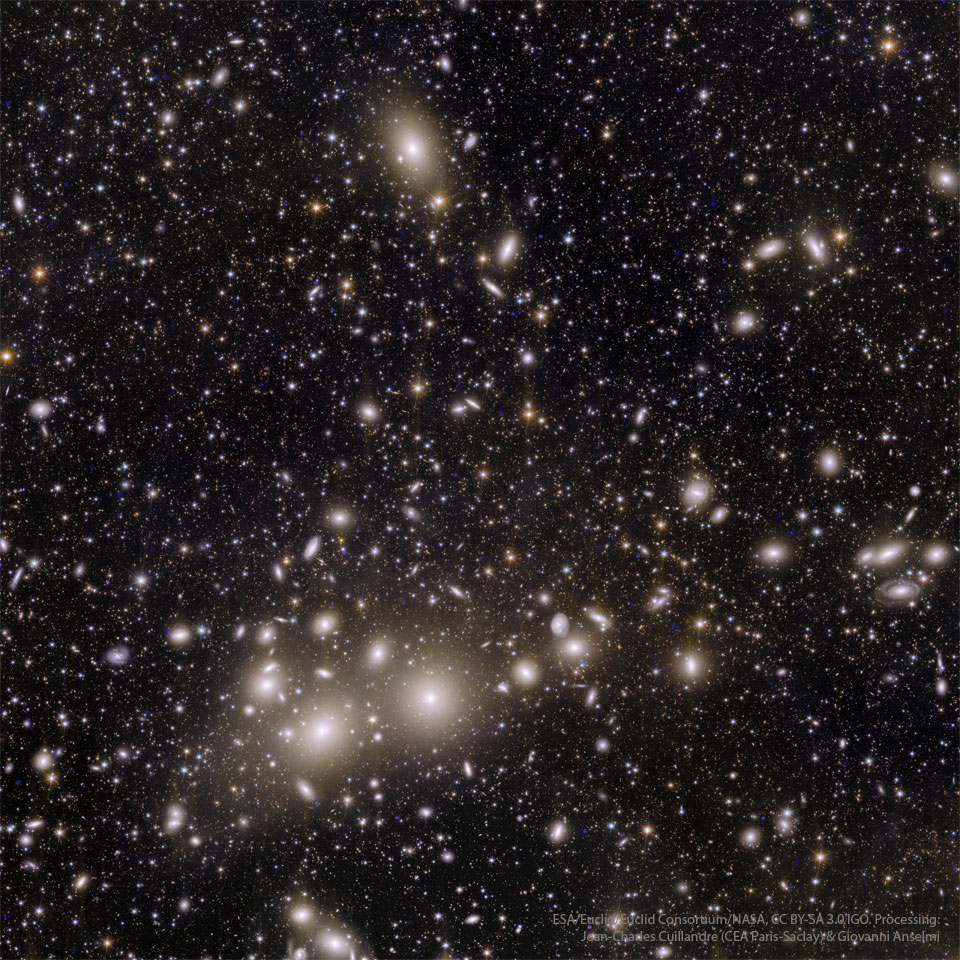2023 November 8
Image Credit & License: ESA, Euclid, Euclid Consortium, NASA; Processing: Jean-Charles Cuillandre (CEA Paris-Saclay) & Giovanni Anselmi; Text: Jean-Charles Cuillandre
Explanation: There's a new space telescope in the sky: Euclid. Equipped with two large panoramic cameras, Euclid captures light from the visible to the near-infrared. It took five hours of observing for Euclid's 1.2-meter diameter primary mirror to capture, through its sharp optics, the 1000+ galaxies in the Perseus cluster, which lies 250 million light years away. More than 100,000 galaxies are visible in the background, some as far away as 10 billion light years. The revolutionary nature of Euclid lies in the combination of its wide field of view (twice the area of the full moon), its high angular resolution (thanks to its 620 Megapixel camera), and its infrared vision, which captures both images and spectra. Euclid's initial surveys, covering a third of the sky and recording over 2 billion galaxies, will enable a study of how dark matter and dark energy have shaped our universe.


Aucun commentaire:
Enregistrer un commentaire
Commentez ici